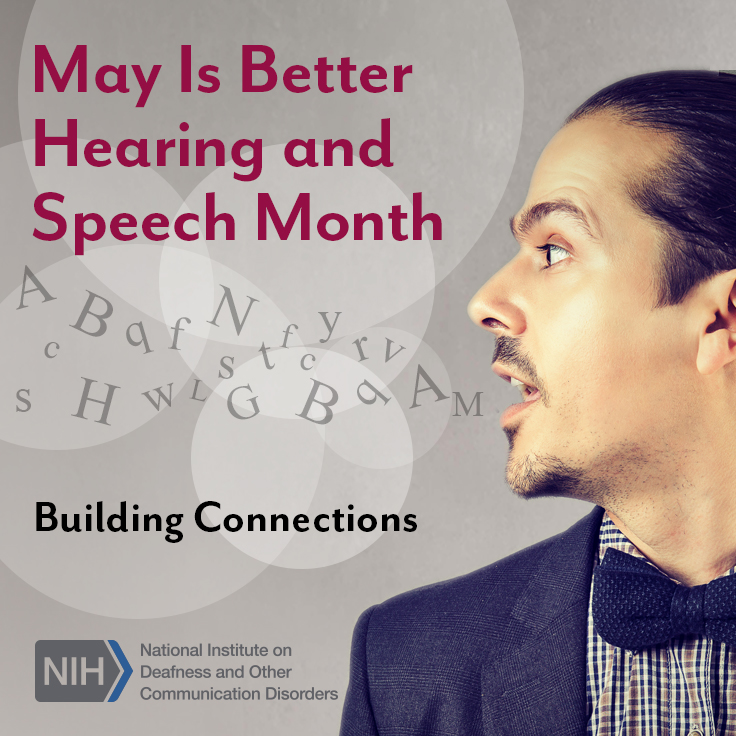
Click on the image or on this link-sharing page to use our social media sharing tools or embed the image in your website or blog. A Spanish-language version of this image is also available.
Each May, the National Institute on Deafness and Other Communication Disorders (NIDCD) joins the American Speech-Language-Hearing Association(ASHA) in observing Better Hearing and Speech Month to raise awareness about hearing and speech disorders. This year’s theme, “Building Connections,” couldn’t be more relevant, as pandemic-related restrictions have been limiting our social interactions over the past year, highlighting ways in which maintaining communication—and connections—are central to our well-being. In addition, scientific breakthroughs in hearing and speech—many of which were funded by the NIDCD—connect research in the lab to interventions that help people connect with each other through communication.
Hearing, voice, speech, and language disorders exact a far-reaching toll on public health and individual well-being. At least 46 million people in the U.S. have a hearing or other communication disorder that affects how they engage with their environments. These disorders can occur at any age and in all ethnic and socioeconomic groups.
Hearing loss can be present at birth, happen instantly, or, most commonly, develop over time from excessive noise exposure, aging, or a combination of these factors. Approximately 15% of American adults (37.5 million) report some trouble hearing. This rate increases to 50% among those who are 75 and older.
Individuals with untreated hearing loss may become isolated from their families and communities. In older adults, untreated hearing loss is also associated with higher total health care costs, increased risk of dementia and cognitive decline, falls, depression, and lower quality of life. Hearing aids and other assistive devices can help people with hearing problems reconnect to others, but only about one in four adults (ages 20 and over) who could benefit from hearing aids has ever used them.
Speech disorders and related conditions also affect adults and children—with or without hearing problems. By the first grade, roughly 5% of children have noticeable speech disorders, usually marked by difficulty pronouncing specific sounds. Stuttering, a disorder affecting speech fluency, affects approximately 5 to 10% of children in the U.S. Stuttering may last a few weeks or several years, or it may persist into adulthood.
Research funded by the NIDCD has advanced our understanding of hearing, voice, speech, and language disorders, leading to improvements in diagnostic, treatment, and prevention strategies. To help people with hearing loss connect with others and with their environment, for example, the NIDCD has supported basic, clinical, and translational research on assistive device technology to improve hearing aids, cochlear implants, and other devices, as well as studies to improve access to affordable hearing health care.
Researchers are making similarly remarkable advances in assistive devices for people with speech disorders. One exciting example could help individuals who have lost their ability to express words from stroke or neurodegenerative diseases regain an ability to communicate. Early research is exploring how novel assistive devices could record and translate certain signals in the brain to enable the user to speak directly through a computer.
This May, we encourage you to share our Better Hearing and Speech Month image (also available in a Spanish-language version) and our science-based health information resources on hearing, voice, speech, and language disorders. These NIDCD pages provide more information:

